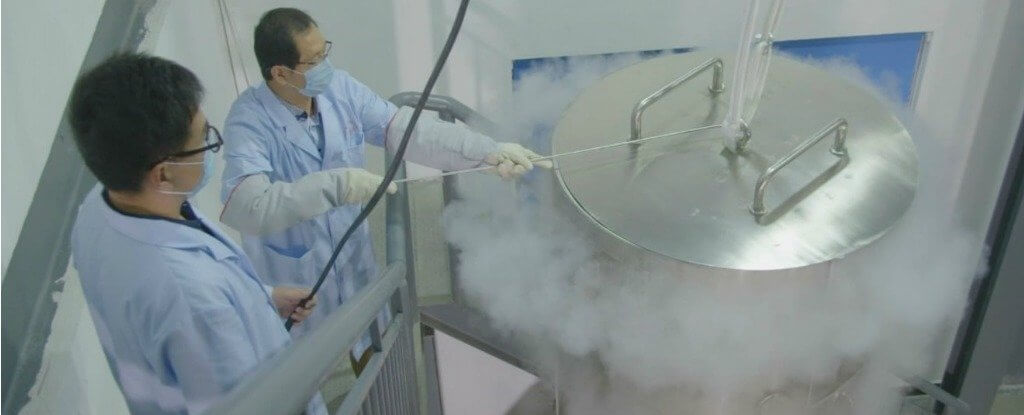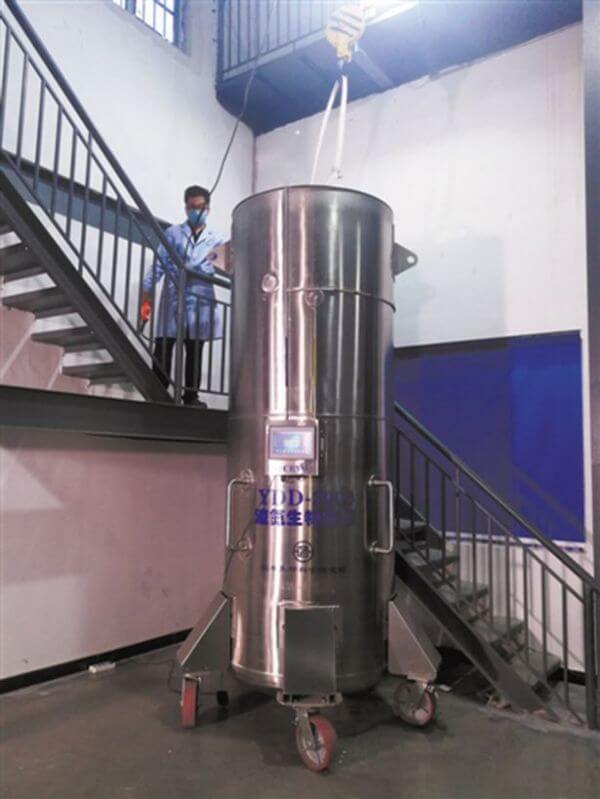
Cryogenics is the practice of fast and deep freezing recently deceased people (or even separate organs, for example brain), hoping one day to resurrect them when the technology becomes much more advanced. Right now cryogenics is a matter of serious scientific research. Of course, as on a practical level, this area is relatively new, a certain amount of pseudo-science, myths and rumors it is also present. Recently, however, China was the first in the country kryzanowska person.
To resort to this procedure volunteered “volunteer” husband 49-year-old Qian Wen Liang, died of lung cancer. Both spouses agree that after death her body will be handed over for research. In an interview with Mirror he said that they initially decided to choose cryogenics as considering it as “a project on preservation of life.”
In this procedure, the company Yinfeng Biological Group, located in Jinan city, placed the body of Wen Lian in a container of 2000 liters of liquid hydrogen. The project itself is international. It was attended by several Chinese and one American company.

The body of the dead Qian is stored in one of those cryogenic chambers
Despite the fact that this technology now invested so much faith, left open the following question: how to do a scientific point of view, it’s possible? Is this just an experiment aimed at a better understanding of our biology or cryogenics one day really will be an available choice?
Scientists say that in cryogenics, a critical aspect is time. The body of the deceased undergo cryogenic freezing almost immediately after the person stops beating heart. But “freezing” in this case is not the right term, as the cryogenic procedure actually aims to avoid the formation of ice crystals that can damage cells and tissues of the body. Therefore, the “very rapid cooling” is more appropriate and accurate description for this process.
To preserve the body from decay at cryogenic process applies a chemical solution “preservative” of glycerol and PROPANEDIOL yield. They’re used to protect body from damage as a result of very long exposure to extreme low temperatures. After that, the bodies are of particular importance, because an essential premise of cryogenics reads: death is a continuous process which may one day be stopped. A key objective of the technology once will be the ability resuscitation of the bodies at the cellular level and mostly without specific epigenetic modifications.
“I’m generally inclined to believe in new and developing technologies, so I think that in the future we will have the opportunity to bring it back,” commented the husband of the deceased.
With our current level of understanding and technology, the process of returning a dead person to life is simply impossible. Perhaps the only example of such opportunities are moments of clinical death, when the patient literally return from the dead with the help of various methods like defibrillation of the heart.
Cryogenics, in turn, definitely looks closer to science fiction or alchemy, where death is seen more as an unfinished process rather than the final event of life. But just because we have not yet succeeded in the resurrection of the dead, does not mean that the field of cryogenics is a completely meaningless form of research and practices. The same case in China is a step forward for all to explore this area, and perhaps one day we really can achieve outstanding results.
Maybe now we can’t conquer death, but this does not prevent us to dream that one day, scientific progress and further development of technology will not give us this opportunity. In our generation this is unlikely to happen, but without research there will be no progress.
In China carried out the first procedure cryogenic freezing
Nikolai Khizhnyak